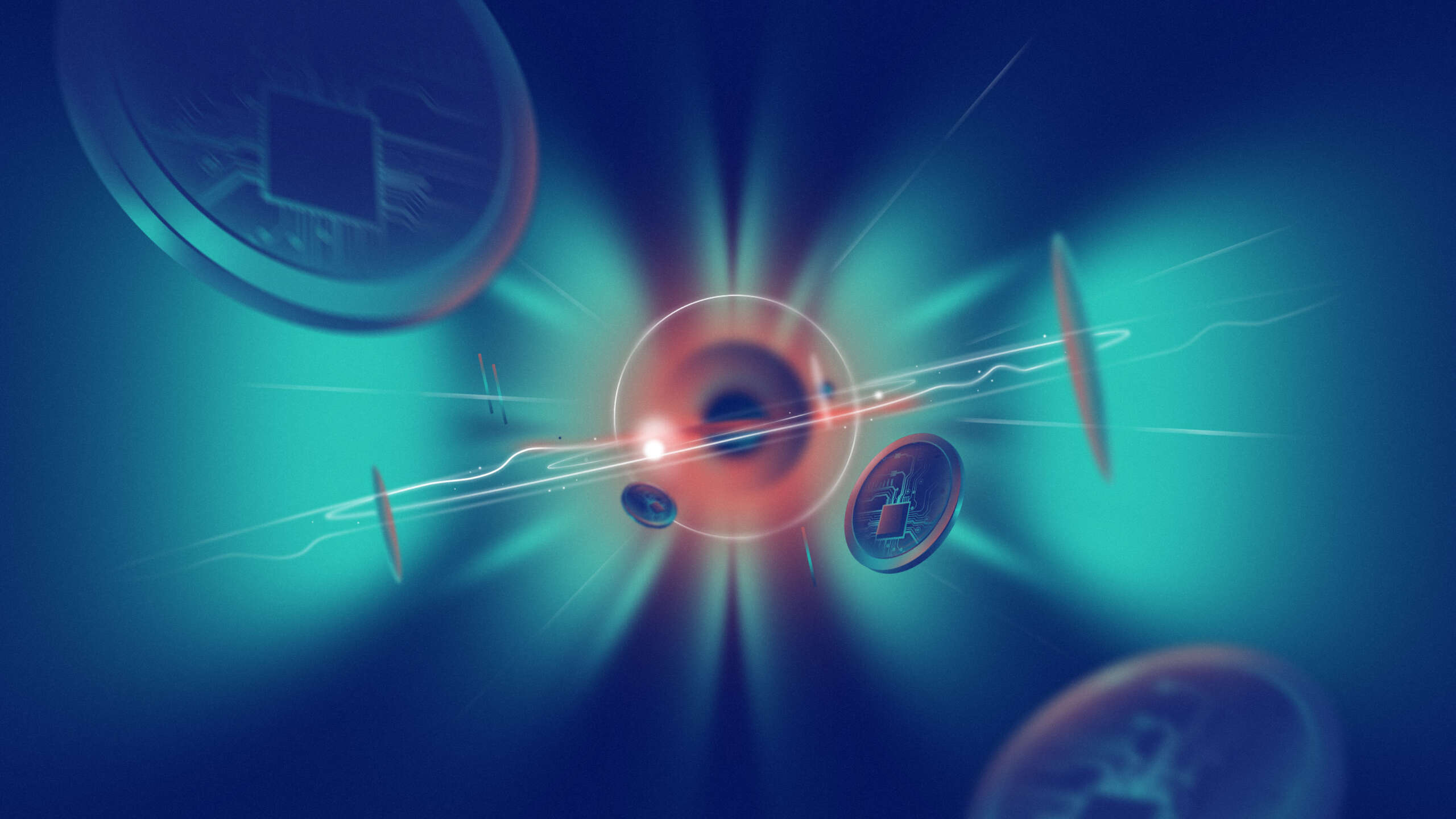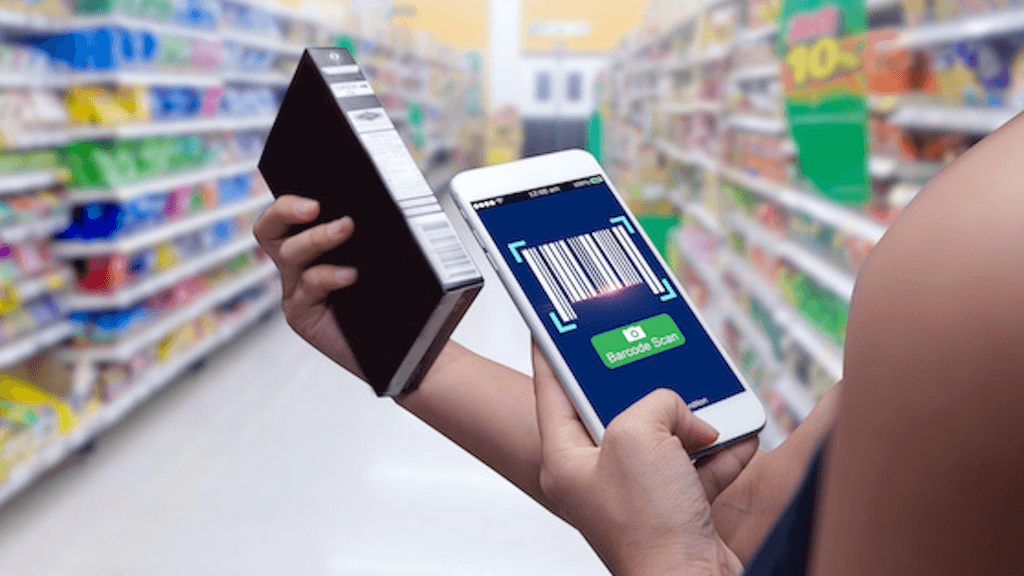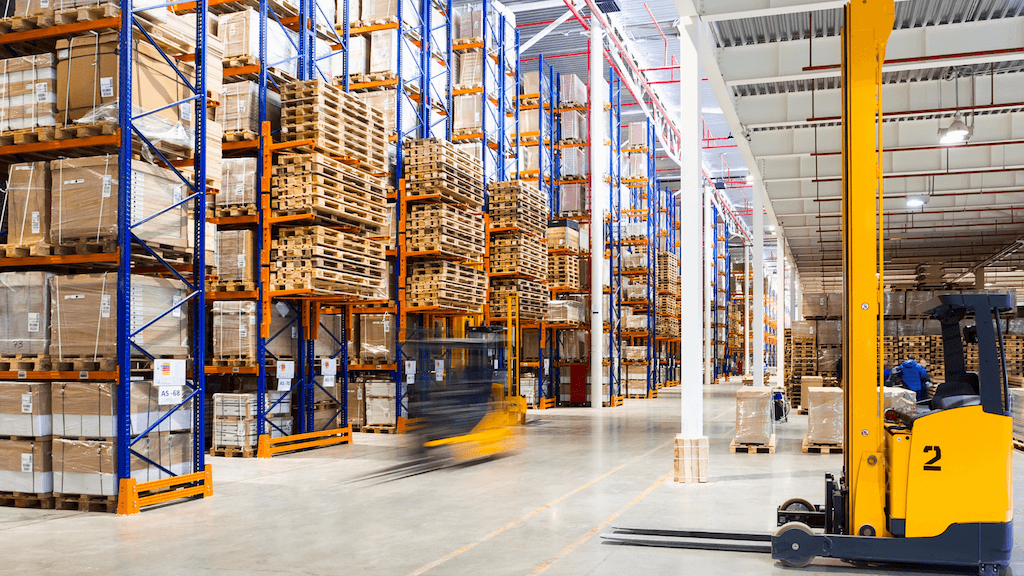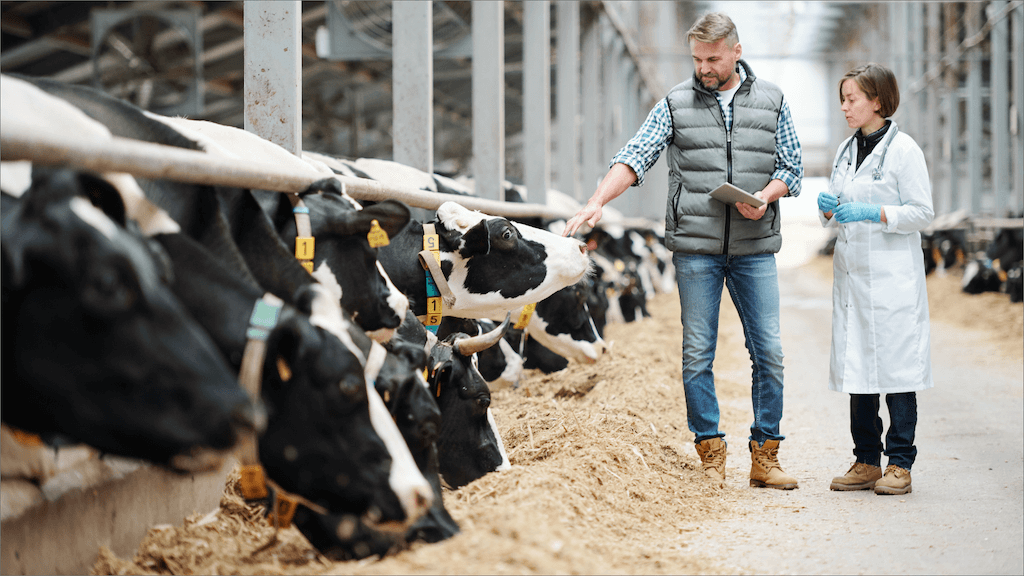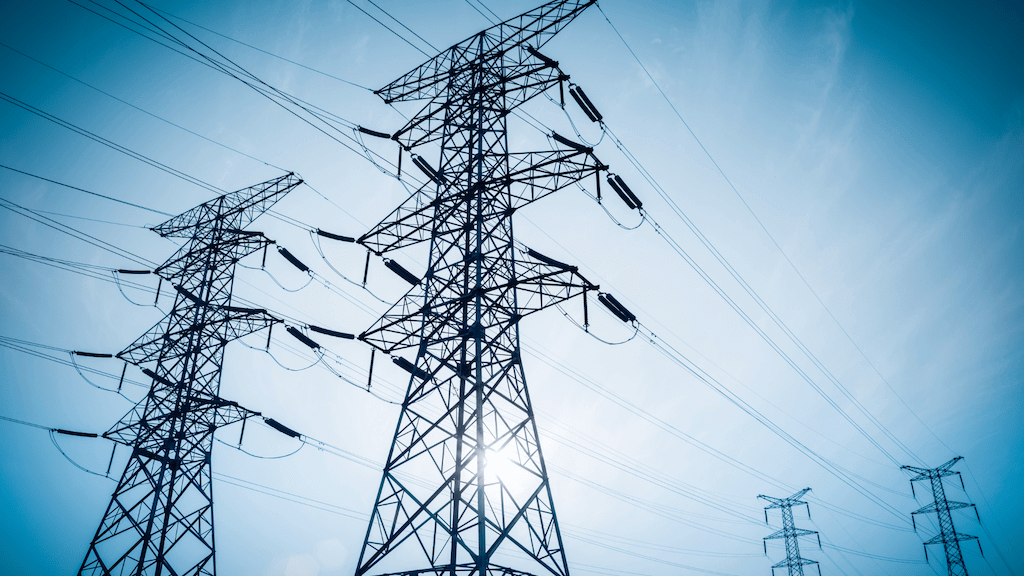Tag: Case Study
At MaxinAI, we always come up with state-of-the-art solutions. This time we partnered with C-Devs to help MBMX develop a smart contract with an account freezing function and an automated coin burn.
Launching a cryptocurrency is challenging, especially considering the competition surrounding digital tokens. It’s hard to stand out and deliver a successful product that has increased usability and value for the customers. It’s even more difficult to achieve considerable success in the industry without building a strong foundation first.
This challenge gets amplified even further when we factor in the time-consuming process of coin burn. Most owners burn a specific number of cryptocurrencies, but not all of them are capable of automating the process and increasing efficiency.
More importantly, even the biggest crypto companies are vulnerable to the damage caused by suspicious accounts. Since digital tokens operate on blockchain and lack a central authority, it’s virtually impossible to protect the users from possible attacks and theft. Without an innovative solution, it’s difficult to limit the impact of digital threats.
That’s why it’s so important to launch a cryptocurrency project with a bulletproof smart contract that includes usable features and specifications. It’s essential to come up with a mechanism that would maintain the value of the coin and protect the users at the same time.
But how is it possible to make the coin burn less time-consuming? How can the owner mitigate the effects of suspicious activities?
What is coin burn and why is it necessary?
Coin burn is the process of destroying a certain number of cryptocurrencies. To remove them from circulation, coins are usually transferred to a specific Burn wallet that receives transactions but doesn’t allow withdrawal.
The main reason why it’s necessary to burn coins is to prevent inflation, which is caused by supplying excessive numbers of currencies. By reducing the supply, it’s possible to increase the value of the cryptocurrency or guarantee an increase in value in the future.
Burning the coins manually can be a time-consuming process, as it requires the users or the owner to transfer crypto to the Burn wallet regularly. Manual burning can decrease the efficiency of the contract and create significant vulnerabilities.
Why are suspicious accounts jeopardizing security?
Cryptocurrencies are launched on the blockchain – a secure network that makes it possible to execute safe transactions. Yet even blockchain isn’t impenetrable to digital attacks and malicious accounts that conduct dishonest activities.
Without a central authority overseeing the transactions, suspicious accounts can steal funds from the users or the owners.
Dude Coin – An innovative non-profit cryptocurrency
MBMX recently launched a new cryptocurrency – Dude Coin. It’s a non-profit incentive that aims to help people gain financial stability. The owners collaborate with charities and donate all the earnings to underprivileged individuals, children, and families.
Before launching the Dude Coin, MBMX needed a company of professionals who would help in the process of smart contract development. They wanted to partner with a team that would deliver a high-quality smart contract with innovative features. That’s how MBMX ended up partnering with MaxinAI.
MBMX Universe partners with MaxinAI
MaxinAI is a blockchain development company with extensive expertise in smart contract development, AI, Big Data, and software development. With multiple success stories and comprehensive crypto knowledge, we were an obvious choice for the client.
As MBMX was preparing to launch a new coin, they approached us with the request to develop a smart contract. They wanted to optimize the process of burning the crypto and implement some sort of security mechanism that would prevent the theft of money.
To deliver a bulletproof smart contract, we put together a team of professional developers. We gathered the talents with an innovative mindset to tackle the challenges of the project.
Our solution for the optimization of coin burn was to automate the process using the Gelato Network. We came up with a mechanism that would trigger the network and burn a pre-determined number of coins daily. We also created a BurnWallet contract that would only be accessible to the owner.
To tackle the security challenges, we also implemented an account freezing function in the smart contract. With this function, the owner can freeze the accounts that conduct suspicious activities. For example, if an account steals funds from other users, the owner can freeze their assets and make it impossible to use stolen assets.
In collaboration with our client, we decided to use the Polygon platform. By doing so, we optimized the smart contract and reduced transaction fees (i.e. gas).
To make sure the project would be successful, we had to take the following steps in the process:
1. Receiving the requirements from the client to plan the project accurately;
2. Working on the written documentation required for the smart contract and confirming the details with the client;
3. Creating an initial version of the smart contract and deploying it to the Testnet;
4. Conducting an external audit of the smart contract and correcting any deficiencies;
5. Showing the smart contract to the client and receiving final requirements;
6. Auditing the smart contract once again to confirm that changes were implemented correctly;
7. Deploying the final smart contract on Mainnet and transferring ownership to the client.
Throughout the whole process, we maintained a clear network of communication with the client. We provided recommendations regarding the best ways to tackle the existing challenges, particularly with burn automation and account freezing function.
Smart contract development for Dude Coin took about a month to complete. The project was medium in terms of difficulty, which is why we were able to deliver it in such a short amount of time.
The success of the project was demonstrated through a comprehensive smart contract audit. We always use external auditing services to prove the quality of our products. During the audit, we discovered minor errors that were easily corrected. We conducted the audit once more to ensure the final smart contract would be bulletproof.
By auditing the smart contract before launching it to the blockchain, we empowered the client to showcase their reliability and build trust among their customers.
At the end of the project, the client confirmed that all of their requirements were successfully implemented.
Next steps in our partnership
MaxinAI and MBMX are continuing their partnership. With the trust we built throughout the previous project, we’re taking new steps toward the future of our partnership. This time we’re working on a project that includes the development of a unique ERC20 smart contract.
Do you want your project to be just as successful as the Dude Coin? Schedule a consultation today, get started with smart contract development and we’ll help you build a strong foundation for your project!
By using the MaxinaAI solution, the customer was able to automate the extraction of food label data and confirm its compliance with country-specific regulations.


Challenge
Seeing various foreign products on the shelves of local stores may seem like a normal thing, but there is a complicated process behind it all. Before these products can be sold, their labels must meet specific requirements set by the destination country.
Since each country has different standards when it comes to food and food-related products, it is vitally important that food exporting companies comply with country-specific regulations.
Most of the time this process requires an incredible amount of human resources and is usually very time-consuming. The traditional process is often very complex, labor-intensive, and error-prone. It includes dedicated staff who manually extracts data from product labels and manually verifies compliance with country regulations.
Our Swiss client, C-Labs SA, develops solutions to transform food regulatory compliance and was aware of the industry challenges mentioned above. To fight the complexity and time-consuming nature of this process, a customer decided to automate it with the help of the MaxinaAI team.
That is why they approached us and asked for a solution that would simplify obtaining information on food ingredients and their verification with the specific regulations of the country.
Solution
At the core of our solution was computer vision, a technology that helps computers gain high-level understanding from digital images or videos, label images, and automate tasks that the human visual system can perform.
Let´s take a look at how we incorporated computer vision in our solution. For the start, we created a model that classified all nutritional labels from uploaded pictures and performed text extraction on them which was done directly from the food products’ nutritional label and the information on the ingredients was later compared with the desired country regulation.
To identify the text on the product package, Optical Character Recognition (OCR) was used. OCR is a technology that helps the user transform desired documents (images from paper documents, scanned images, etc.) into searchable and editable data.
This technology makes difficult data extraction possible. Some products (such as potato chip bags) have a softcover, which causes the text written on them to bend or, due to the light, the text does not show well, making it difficult to extract the text. However, OCR technology makes it possible and feasible.
Another benefit of OCR is accelerated information search and extraction. So for example, if a colleague sends you a photo of a document taken by the camera, it will be difficult for you to quickly search for the information or even more so, edit it. With the help of Optical Character Recognition, you can digitize the text contained in the document making searching and editing information easy and convenient.
The same benefit was acquired for our client. They did not have to manually extract all the information from the food package, as with our solution it was possible to extract the product information automatically from the user-uploaded image, including nutritional information, weight, and manufacturer name.
Before MaxinAI solution:


After MaxinAI solution:


A dedicated team has trained custom machine learning models using open-source dataset and product images from Amazon. In combination with several cloud OCR services, we managed to provide a high-quality API service. The multi-step pipeline was created to process large amounts of data in a scalable way.
To make this process easier, we also created a system with a user interface where the information was displayed in a structured and visual way that helped and simplified the work process for the end-user.
Technologies
- Customized YOLO implementation on PyTorch
- spaCy + scikit-learn for NLP adjustment
- Dockers and Google Cloud for continuous delivery
- Google OCR and AWS Textract
- Scrapy to collect data from different sources
Skip the boring manual work
The old-school data entry process includes manual labor done by people that has proven not only time-consuming but prone to inaccuracy and human error from time to time. With the MaxinAI solution, you can automate this process saving yourself time and trouble.
Today, no one should be burdened with mundane and repetitive tasks. With intelligent automation, you and your staff can take on more important tasks that have a greater impact on business performance.
Similar project in mind? We offer a free pilot project!
MaxinAI’s solution helps warehouses in product allocation and space optimization, requiring the lowest costs and producing the highest efficiency.
Goal
Our client, a California-based company that provides consulting services to warehouses wanted to give its customers recommendations on warehouse logistics that would lower costs and increase productivity and efficiency.
When we think of a warehouse, we think of simple operations such as moving goods from one place to another. However, warehouse managers know the real struggle associated with efficient space management.
Inefficient space management can lead to excessive travel distances for employees, stock-outs and lost sales, and longer fulfillment times. That’s why effective space allocation and inventory management are some of the most challenging tasks that managers still tackle with difficulty.
Some of the difficulties related to warehouse management include:
- Poor space/layout management practices
Problems such as not knowing the exact capacity of the space or not being able to correctly analyze the specificity of the design can be detrimental to the warehouse and hinder the growth of a company.
- Excess stock
When the company does not sell the goods in a timely manner or when there is more product than the demand, the goods tend to accumulate and become an expense for the company and are associated with lost revenue due to additional capital tied to occupied storage space.
- Product misallocation
Placing the best-selling goods in the back while the least-selling ones are in the front or unnecessary product handling becomes an additional and unnecessary operation that can add considerable cost to a business. Even a small optimization in this operation produces significant results in terms of reducing costs and maximizing efficiency.
- Lack of human capital
Due to the lack of information on warehouse operations, sometimes the human resources employed are not enough, causing process delays and slowing down warehouse efficiency.
One solution to rule them all


The challenges mentioned above can be difficult to tackle at times and the consequences are often damaging. But what if we told you that there may be a single solution that not only solves all the problems mentioned above, but also improves the overall performance of the warehouse?
As smart AI solutions have penetrated almost every sector, logistics is no exception. Innovative tools are constantly being introduced to help managers better handle the warehouse and its activities.
The truth is that warehouses already have the necessary data that is useful for the optimization of processes and, in addition, their improvement. However, what they lack are the tools that can make sense of all this data and give concrete suggestions for improvement.
Exactly based on the data, we provided a program that uses optimization methods and obtains information about the warehouse installation (space allocation, product dimensions), sales history, customer order behavior, etc.
Subsequently, it recognizes patterns and regularities from the aforementioned information which is then used to inform decisions and give suggestions on how to improve warehouse operations, such as product allocation and space optimization that requires the lowest cost and provides the highest efficiency.


Now, thanks to our solution, managers have access to suggestions such as shorter walking routes for better timely service or better inventory positioning based on product popularity. So for example, based on years of sales data of different products, our smart solution ranks product popularity and recommends the end-user to place the highest ranked product in front of the warehouse so less time and energy are wasted in loading and moving the product.
Transforming warehouse management
The implementation of AI and intelligent solutions in warehouse management has become even more important in today’s environment when customer satisfaction and competitive advantage have become core factors for the success of the company.
Warehouse management acts as a bridge between the supplier and the customer; therefore, streamlined warehouse operations mean improved supply chain management and happier customers.
Do you have a project in mind? You could be our next success story! Get in touch with our experts to discuss your project potential and get a free pilot project from us.
MaxinAI solution helped an Ireland-based customer automate livestock monitoring and tracking – improving farm operational efficiency and ultimately reducing costs.
Challenge
Agriculture is an ancient activity that researchers believe was “invented” around 12,000 years ago and has been present in daily human life ever since.
Despite the fact that this sector is one of the leading occupations among the population in the countryside, it still lags behind other sectors in terms of underdeveloped methodologies and the use of obsolete techniques. More specifically, there is a demand for safer and more effective operations within this sector.
Innovative solutions such as artificial intelligence, machine learning and computer vision have penetrated many sectors and demonstrated the untapped potential that can be achieved within the agricultural sector in terms of improving operational efficiency.
Fortunately, more and more farms are starting to follow this positive trend. One of them is our client from Ireland that wanted to improve the operational and financial efficiency of its farm.
What is computer vision?
Let’s start with the definition of computer vision, which is defined as the extraction and analysis of information from images or videos to be used in applications such as robotics, security systems and self-driving cars.
Computer vision has several applications within large industrial areas such as manufacturing, surveillance and even medicine.
An application that we will focus on is the use of computer vision in the agricultural sector, which has many benefits such as crop yield, cost and energy reduction.
Solution


Our solution is based on computer vision and acquires data on livestock from cameras installed in the facility. With the help of cameras, images and videos are automatically analyzed and meaningful insights are gained, without the need for human intervention.
The solution recognizes and counts the livestock, as well as their activities such as how long the cattle are being milked. Livestock detection and recognition helps farms operate more efficiently for higher productivity and lower costs by controlling animal diseases and tracking livestock to ensure their safety.
In addition to livestock, the activities of human personnel are also being tracked and analyzed. The system also shows exactly when activities were carried out so that operations can be adjusted and changed according to the need. In this way, users can obtain details about cows that were previously difficult to identify, such as the reason for their illness and body condition.
Another reason users get better and more accurate information on the condition of cattle is that in the presence of a human, cows have evolved to hide most of the early signs of lameness. In many cases, cows can go on for weeks with hurting legs before showing obvious signs of limping. The delay in injury identification negatively affects food intake, milk production, fertility, and longevity.
However, when the injury becomes apparent, most of the time the damage worsens and the cow’s productivity is hampered for a considerable period of time. This can have catastrophic consequences for a farmer if it happens to several animals at the same time.
The advantage of our solution is that when cows are being monitored with smart cameras, they do not feel the human presence and their actions are not disguised, giving more genuine information about their health.
With our solution, the client was able to prevent the aforementioned incidents and optimize various operations such as energy savings, human resources savings and other costs, achieving the advantages of high efficiency and high precision.


Technologies:
- PyTorch
- Python
- Deep learning
- Computer vision algorithms
Time for a change
The opportunities are limitless when it comes to artificial intelligence in the agricultural industry. Replacing manual labor with automation, whenever possible, is important for reducing costs and improving productivity. However, it becomes especially important for farms, as livestock is an essential and significant part of the agricultural sector and the removal of the human factor can contribute to the early identification of injuries in livestock.
If you are a representative of the agricultural sector and you are interested in a similar solution, do not hesitate and schedule a call with our expert.
We will go over your specific use case and offer you a pilot project free of charge!
We created a model that predicted the energy consumption of a power station one day in advance and could forecast the power generation potential of solar and wind stations.
Challenge
Can you imagine spending a whole day without your phone, laptop or even without electricity at home? Most likely you can’t.
In today’s digital world, electricity is a vital factor in the country’s development. With our evolution, our dependence on electronic devices has also increased. Which, in turn, increased the demand for electricity use.
However, when it comes to energy production we should remember that energy cannot be stored in large quantities, therefore, ideally, energy generation and consumption should be balanced in real-time.


Disparities between supply and demand cause problems not only for businesses but also for ordinary people in everyday life. The demand for electricity does not always match the time when renewable resources are available (the sun doesn’t shine at night and wind often blows when no one wants it to).
That is why the prediction of energy demand and the actual load on electrical grids is important. It helps companies make the right decisions regarding energy planning and generation.
Accurate forecasting of grid load is essential for proper planning and management of electrical power systems. Forecasting load is the basis for the energy price establishment as well for the demand side planning, management and energy storage scheduling.
Our client, one of the largest power supply alliances in Germany, located in the northeast of the country, often faced an unwanted situation where its existing distribution lines could not accommodate the required load during high demand or emergency situations. This occurrence is also known as grid congestion.
There was a need for a smart solution that would help the client avoid the power redispatching problem, altering the power generation and load pattern in order to change physical flows in the transmission system and relieve physical congestion.
Solution from actionable data


Load prediction is a complex problem and to develop a solution that accurately predicts grid load, it is important to understand what various factors influence energy demand.
We started our project by taking a look at conventional power station generation schedules as well as wind and solar power generation data. Also, we got information about the loads from up to 100 substations located in the northeast of Germany.
In addition to the data mentioned above, we analyzed the weather as an important factor in forecasting network load.
Climate plays an important role in forecasting energy demand, especially when the share of renewable energy has increased. Power generation from renewable energy sources like solar panels and wind turbines is highly dependent on weather conditions. Therefore, we analyze data related to temperature, humidity, wind speed and direction, cloud cover, and solar irradiance.


Based on all the data we had access to, we created a benchmarking model. The model was trained for each power substation individually. The client was able to predict the energy consumption of their power station one day in advance and could forecast the power generation potential of solar and wind stations. Based on this, the schedules of conventional power generation could be adjusted.
Delivered:
- Vertical Grid Load 24 hours ahead forecasting model with mean absolute percentage error (MAPE) of 92%
- Models for online Anomaly and Outlier detection/prediction online
- Proposals for data collection and additional data aggregation process
- Proposals for efficient application of open source Big Data management tools and applications


Technologies:
- Prophet, Decision Trees, PyTorch, scikit-learn
Are you interested in a similar project or do you want a different AI solution to improve your business operations? schedule a free call with our experts, we are always happy to chat!
Today, the automation of certain business operations has become a necessity for many companies. Now why is that? Because exactly through automation, companies can achieve higher productivity while reducing costs.
Automating repetitive tasks that were previously carried out by semi-skilled labor is nothing new, but how about doing it in processes that require human intellect, logic and perception?
Some companies are reluctant to delegate human-managed tasks to computers, but developments in Artificial Intelligence (AI) and Machine Learning (ML) show that doing so not only improves certain operations, but can also be cheaper.


Real-life example: car damage recognition with AI
One of Georgia’s largest insurance companies partnered with MaxinAI to create an application that would automate the entire motor vehicle damage claim process.
The company wanted an app that would allow users to file a damage claim by taking a photo of the car that would then be analyzed by machine learning algorithms, detecting the damage and estimating its cost.
Before the MaxinAI solution
Human Error
Before our solution, damage detection was done manually, which was not an easy task. Insurance agents receive special training to identify and assess car damage. And while agents are really good at this, there are still cases of human error that result in unfair compensation.
Fraud
Some customers have noticed this flaw and have tried to take advantage of it. Insurance fraud is a problem that affects all insurance companies around the world and our partner was no exception.
Therefore, the company needed a solution that would solve the problem of exaggerating the damages or claims for damages that were present even before the vehicle was insured.
Waiting time
Since the process was handled manually, an agent was required to inspect the vehicle and customers had to complete some paperwork. Therefore, our partner realized that automating this process without the need for human intervention would speed up the waiting process.
Our Solution
We developed a deep learning algorithm that was trained on more than 50,000 images to recognize the exact area of damage and classify the damage.
For better model performance, the scraped images included all kinds of vehicle defects such as flat tires, broken windows, dents, vandalism, and crashes. In this way, the model could identify various types of damage.
Later, with the increase in images provided by users, the algorithm had more data to learn and became smarter in detection and identification.
Results
Our custom AI solution automated car damage detection and price estimation. In addition to identifying the new damages, it was also possible to check whether the damages recently reported by users already existed before. How exactly?
When insuring a car, customers have to upload the image of their vehicle from various angles, which helps our model to see what impairment is already present on the car, so the image serves as a point of reference.
In this way, during the claim of new incidents, the model verifies with the previous image to see if the claimed damage is indeed new, avoiding the human error factor and reducing the cases of insurance fraud.
Because the process is automated and can be started immediately after an accident by a person uploading an image of the damaged vehicle to the app, the waiting time for coverage is also reduced.
Conclusion
Constantly evolving customer expectations require companies to continue and innovate their services.
You might think that cost savings is the biggest benefit of AI-powered damage detection solutions; However, it is just as important to create convenience for your users.
Allowing customers to quickly upload the car’s image on the app instead of a traditional slow and unpleasant damage assessment process increases customer satisfaction, which is directly related to the company’s profits.
If you want your business to gain a competitive advantage with AI, our team will be more than happy to team up with you and start making a success story from our mutual project. Schedule a free consultation call with our experts. Let’s do something cool together!




